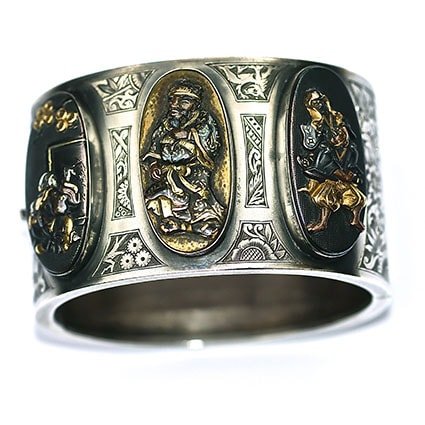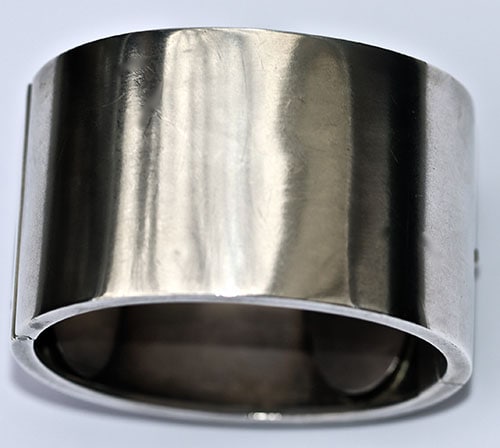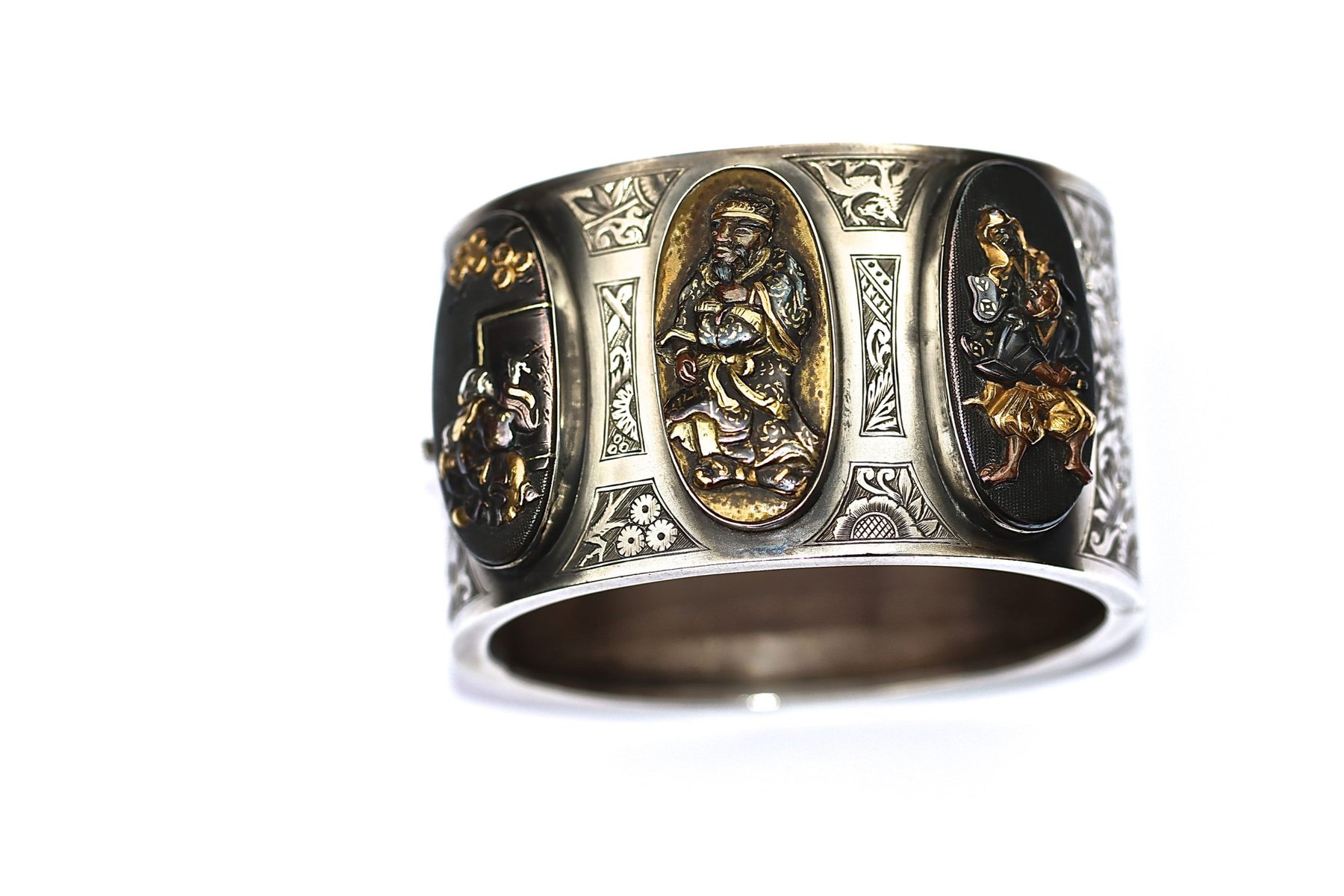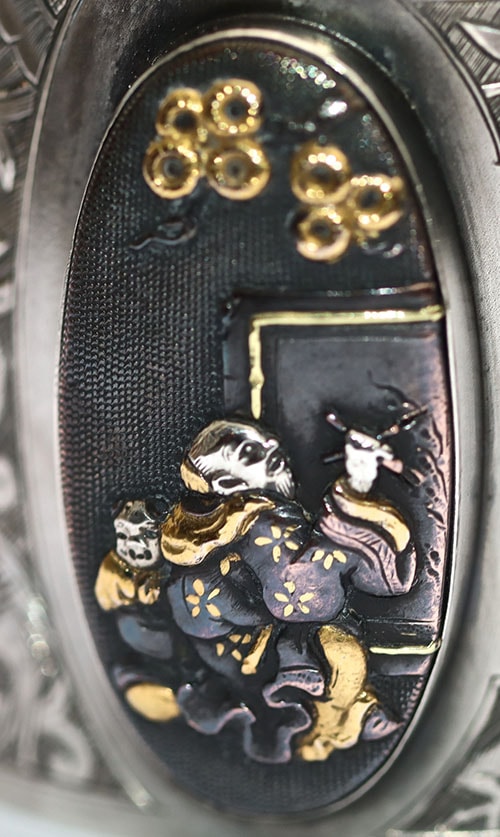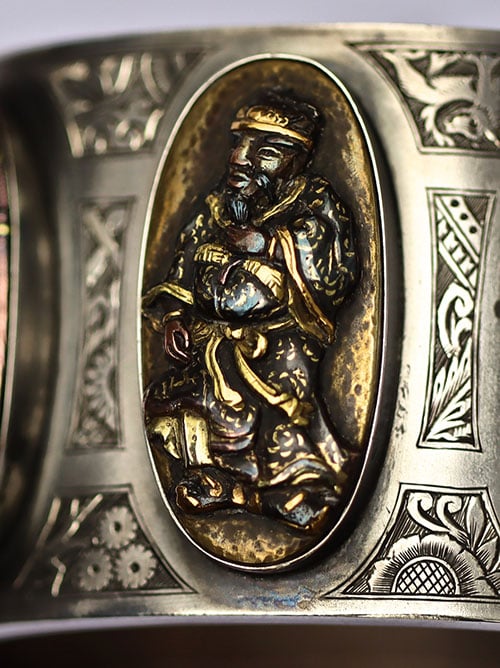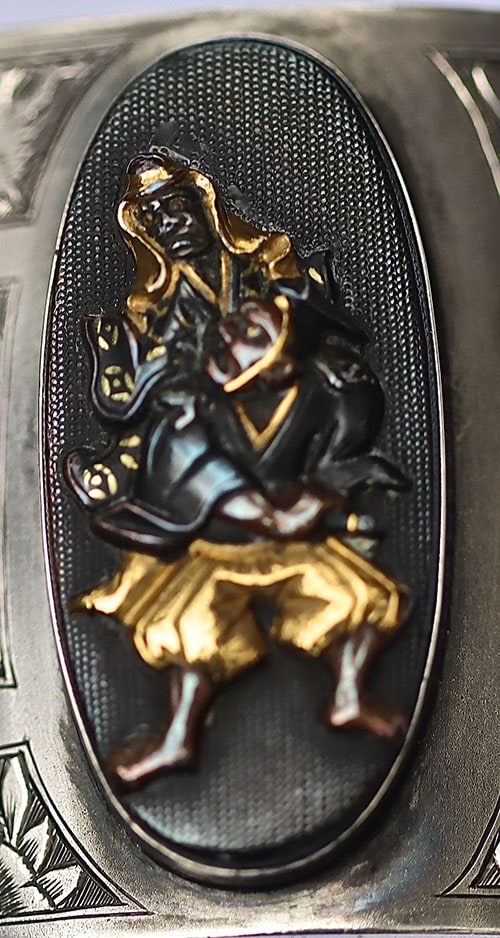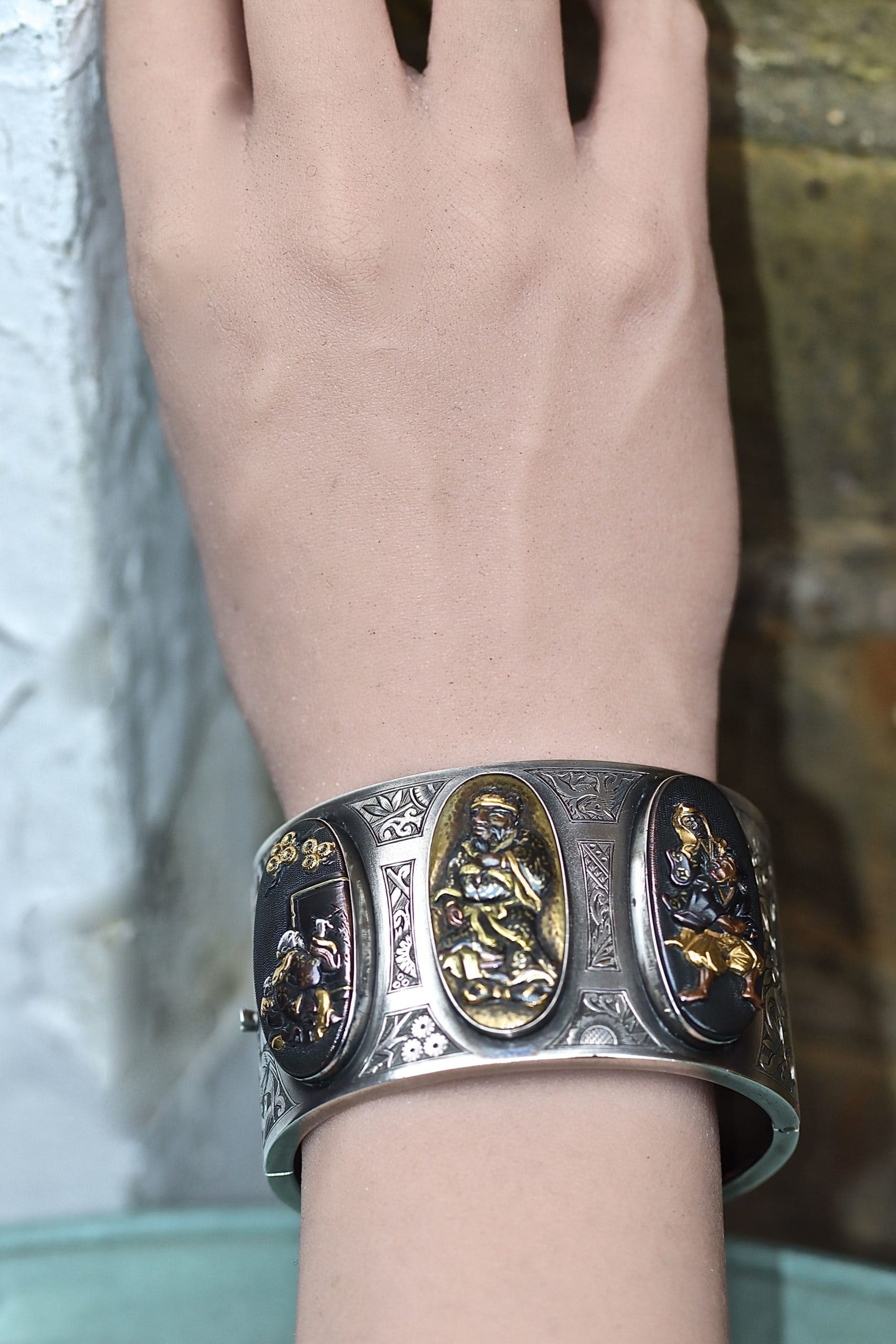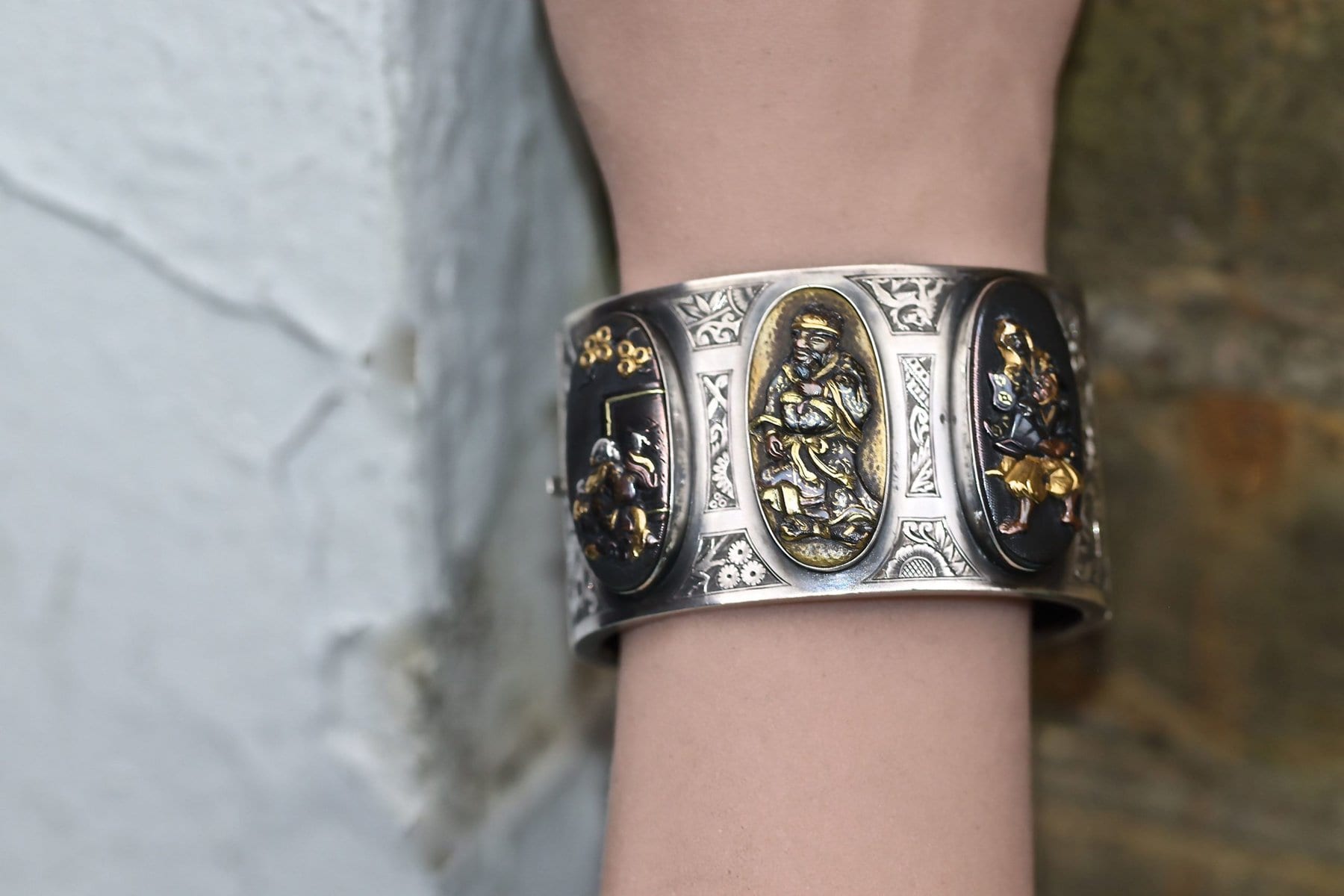Shakudo bangle
A striking silver bangle, probably Birmingham work, set with Japanese shakudo plaques, circa 1870 – 1880. The Japanese metalworking technique of shakudo involved creating an alloy of copper and gold, inlaid with a range of coloured alloys set into a dark base which is usually very black in appearance. The range of colours achieved by the Japanese craftsmen was far greater than that known in European work of any period. The technique was developed by the Samurai sword-makers for the decoration of the sword-mounts and guards, but the same type of work was also found on decorative items, especially after samurai were banned from bearing arms in 1876. Here the Shakudo iroe [coloured picture designs] depict a scholar writing on a wall, an emperor and a samurai fighting a demon. Such was the European fascination with Japanese arts and crafts that in July 1878 the jeweller Edwin Streeter, encouraged by Christopher Dresser, installed a Japanese room in his Bond Street shop. Streeter filled it with ‘plates in inlaid silver of marvellous perfection, cloisonné enamels, jewellery, ancient vessels.’ [Art-Journal, July 1878, p. 158] . This Shakudo bangle is 1 and 3/4 inches wide. It will fit a wrist of 7 to 7.5 inches. Such a stylish, dramatic piece.
sold
